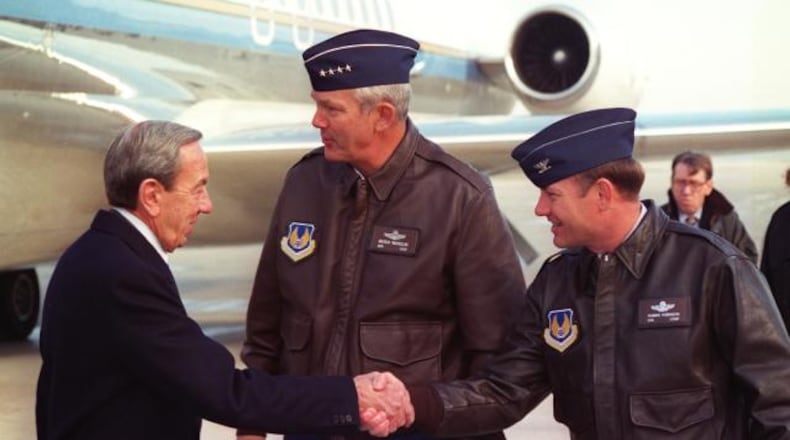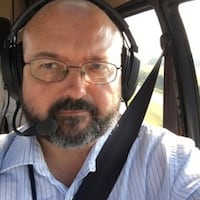The approaching 30th anniversary of the talks is one reason why NATO’s Parliamentary Assembly came to Dayton Memorial Day weekend for its spring session. That session wraps up Monday.
Wright-Patterson provided the infrastructure for the talks, which brought together the leaders of three states emerging from the break-up of the former Yugoslavia at the end of the Cold War. The base provided a relatively quiet, secure setting rich with the unmistakable symbols of American power.
The fact that NATO delegates and students of history are still celebrating the event 30 years later is “fantastic” to Robinson, he said Sunday.
At the time, his expectations started relatively low.
“My mental picture of success was that they hold the talks, they don’t end up shooting each other during the talks,” Robinson said. “Whether there would be any actual agreement — you’ve got to look at the record in the past for having peace talks. Look at what’s going on today. It’s very rare."
He cited the long-simmering conflicts in Ukraine and Gaza as examples of how difficult it is to end fighting. The Korean Peninsula has been a frozen conflict since 1953. At the end of 2023, there were four “frozen conflicts” in Europe, excluding the hot war in Ukraine, according to the Geopolitics and Security Studies Center.
Credit: Skip Peterson
Credit: Skip Peterson
The fact that participants sat down at the Hope Hotel and Conference Center at Wright-Patterson on Nov. 21, 1995 to put their initials on documents ending the war was extraordinary, Robinson said.
“I thought, ‘Man, this is fantastic.’ I think we all can take pride in that. In some small way, we contributed to the overall success of what happened,” he said.
The United States government announced that the talks would be held at Wright-Patterson on Oct. 18, 1995. From that day forward, Robinson said community members and other base units reached out to ask if they could help.
“When they made that announcement, my phone was constantly ringing,” he recalled.
To create the space for event took hard work.
“Let me tell you, we defined 24-7, getting everything ready to go,” Robinson said. “Getting ... the five VOQ (visiting officers quarters) buildings ready — it was all hands on deck. All of the people within the civil engineering group, everything they had to do. Everything the security forces had to do."
“To me, that was all part of the Team Wright-Patt concept,” he added.
About the Author



